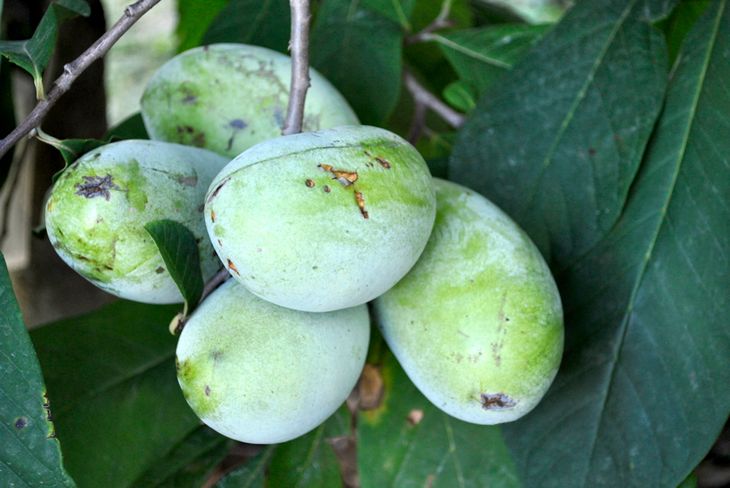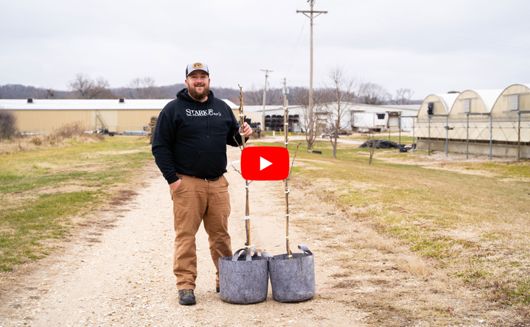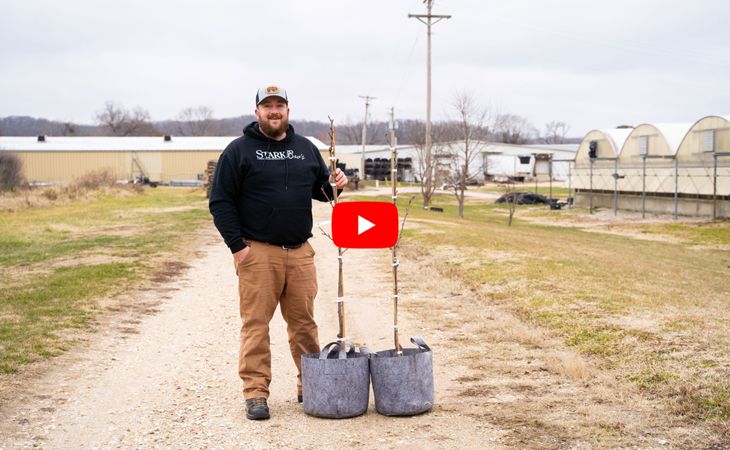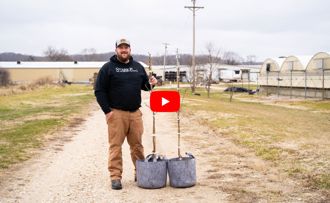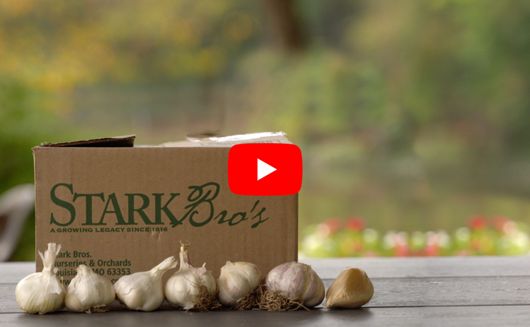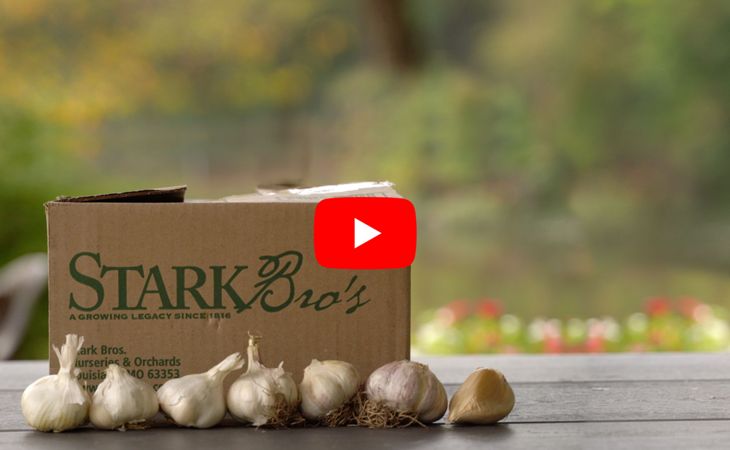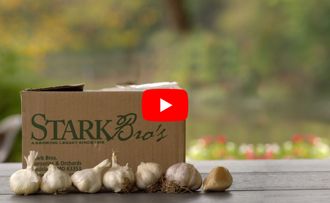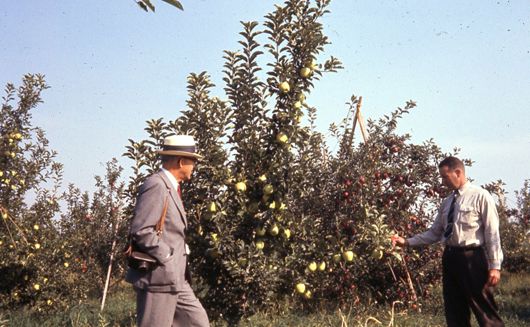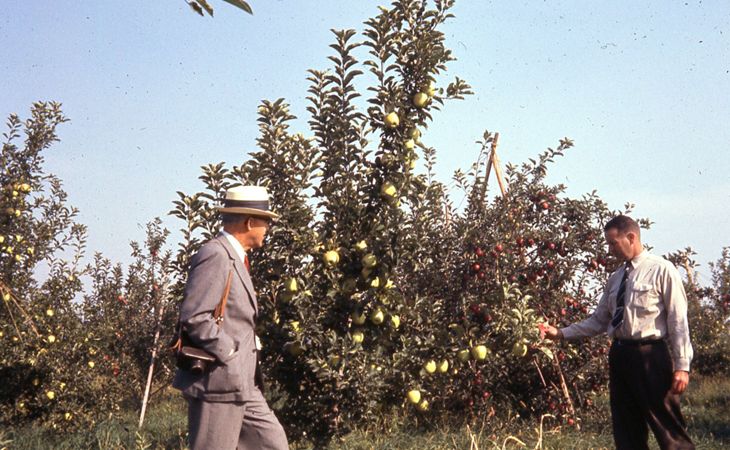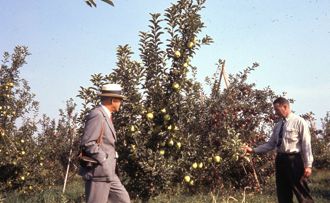All About Pawpaws
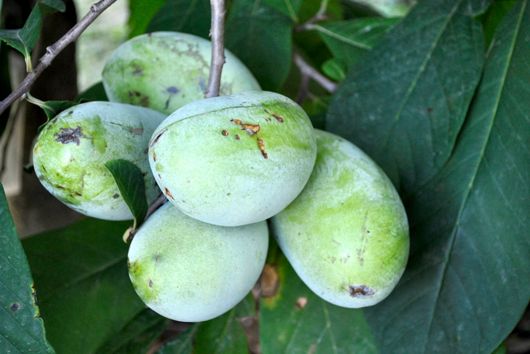
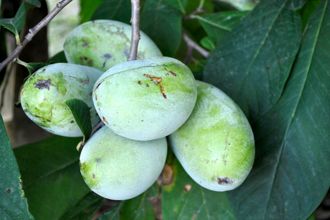
Guest article by Patti Moreno
What Do Pawpaw Fruits Taste Like?
Pawpaws are actually large berries, sometimes growing longer than 6 inches. They ripen from green to yellow (or brown) and have a strong tropical flavor similar to bananas, pineapples, or mangoes.
Ripe pawpaw fruits have a short shelf life—about 3-5 days—making them difficult to sell in grocery stores. Growing pawpaw trees in your backyard is the best way to enjoy this unique native fruit.
How to Grow Pawpaw Trees
Young pawpaw trees are sensitive to full sunlight and require filtered sun for the first year or two. In nature, pawpaw trees grow as understory trees, benefiting from the shade of taller trees. Once established, they thrive in full sun, producing the highest fruit yields. A temporary shade cloth structure can help young trees adapt until they begin blooming and are ready to fruit.
Pawpaw trees are cold-hardy fruit trees, meaning they grow well in colder climates. The common pawpaw (Asimina triloba) is suited for regions from North Florida to Canada.

Pollination Needs for Pawpaw Trees
For proper pollination, plant at least two different grafted varieties (trees of the same grafted variety cannot cross-pollinate). Alternatively, planting two or more seedling pawpaw trees allows for natural cross-pollination. Since pawpaw trees rely on insects for pollination, it's important to cultivate a landscape friendly to pollen-moving insects.
Harvesting & Eating Pawpaws
Pawpaw fruit grows in clusters of 2 to 9 fruits. These trees are low-maintenance, and because they are native to the U.S., they experience few pest issues, making them ideal for organic gardening.
Grafted pawpaw trees purchased from Stark Bro’s begin fruiting in about 3-5 years.

Harvest pawpaws from mid-August through the first frost (typically early- to mid-October). They are delicious fresh from the tree and can also be used in a variety of recipes. Thanks to their banana-like taste and texture, pawpaws make a great banana substitute in recipes like banana bread.
Pawpaw Nutrition & Health Benefits
Pawpaw fruit is rich in nutrients, containing more protein, vitamin C, iron, niacin, calcium, phosphorus, zinc, magnesium, copper, and manganese than apples, oranges, or bananas.
They are perfect for healthy, delicious smoothies. To prepare pawpaws, separate the skin and seeds from the custardy flesh. The skin is edible but not flavorful, and the seeds should not be eaten. Pawpaws can be blended with other fruits for refreshing, nutrient-packed smoothies.
Watch my video for how to make pawpaw smoothies:
— Enjoying the fruits of my labor, Patti Moreno, The Garden Girl
Want to Grow Your Own Pawpaw Trees?
- Article Categories:
- Product Features

